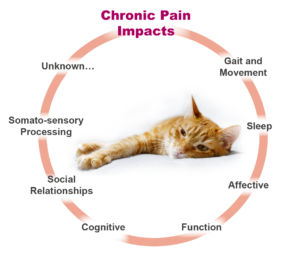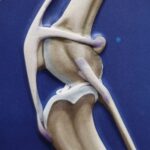Cat arthritis is a common condition that causes painful joints and makes moving uncomfortable. Unfortunately there is no cure for cat arthritis, but there are many ways to help eas the pain caused by arthritis, and more excitingly ways to slow down the progression. Cats are very good at masking pain and hiding their signs, you may however have notice your cat slowing down or not doing what they used to do, or even behavioural changes in their day to day activities.
Symptoms of arthritis in cats include:
- Reluctance or hesitance to jump up or down from furniture, cat posts, fences etc..
- Difficulty or reluctance to go up or down stairs
- Limping – this is not as common considering cats hide their pain well
- Stiffness rising, sitting, or walking
- Difficulty using their litter box
- Irritability and increased grumpiness
- Reduced levels of activity, and interaction with family or other pets.
- Less time spent on their grooming
- Reduced height when jumping
- Hiding or sleeping more than normal
- Not wanting to go outside as much
Causes for Arthritis in Cats
- Wear and tear. The joints may weaken as the cat gets older.
- Abnormalities. Abnormal hip development may affect cartilage around joints.
- Injury/Trauma: When a cat experiences a joint injury that may not heal fully, ongoing damage leads to arthritis.
- Obesity. Overweight cats will have increased pressure placed on their joints, which will exacerbate underlying arthritis and increase wear and tear.
- Genetics. Some cat breeds have an increased risk of arthritis. This is due to abnormal development of their cartilage in particular their elbows and hips. This is most commonly seen in Maine Coon, Persian, Scottish Fold, and Siamese cats. Some cats can be afflicted with painful ostearoarthritis at even a very young age.
How do we Diagnose Cat Arthritis?
A medical history and physical exam can help us determine if you cat has Arthritis. Signs we may find include
- Visible joint thickening
- Joint pain
- Decreased range of motion/mobility
- Grating (scraping noise) when the cat moves its joints
- Swelling or Fluid in the joints, also called joint effusion
- Joint instability in cases of trauma.
- Increased Muscle wastage
- Painful trigger point
- X-rays
- Injectable joint protectants. such as Synovan, which is a protein called Pentosan Polysulphate – This treatment helps relieve arthritic pain, improves, improves joint lubrication, and reduces inflammation. It involves an initial series of injections followed by maintenance doses every 3 months.
- Solensia – which is the latest Monoclonal Antibody Biotherapy given as a monthly injection and is safe and proven to reduce chronic joint pain. Read more about Solensia here
- Non-steroidal anti-inflammatory drugs (NSAIDs). For more severe arthritic pain, NSAIDs can be used providing there are no other underlying health issues such as kidney or liver disease.
- Pain management medication. In some cases, cats will be given painkilling drugs in cases where non-steroidal anti-inflammatory drugs are not appropriate or not sufficient.
- Laser therapy or photobiomodulation (PBMT). This noninvasive and painless treatment that can target specific joints that are painful. This type of treatment has been shown to ease pain and decrease inflammation.
- Weight Management and Joint diets can also play a vital role
If you suspect your cat has arthritis, we can certainly help determine the best treatment option for your cat.








